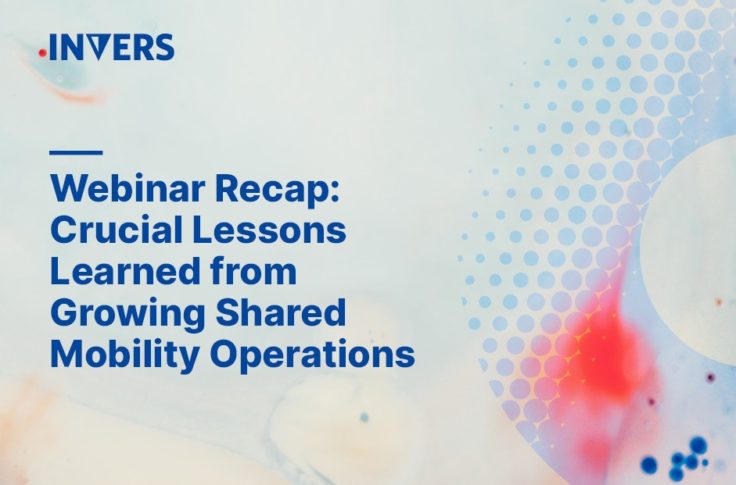The MaaS Relationship Between Micromobility and Transit
Summary
MaaS is a holistic integration approach, bringing transit and shared mobility closer together. Industry expert Enrico Howe takes a closer look at the current integration levels of MaaS in Europe and outlines why more kick scooter, bike, and moped sharing operators participating in MaaS applications can improve the value of these services even further.
Integrating shared micromobility into existing transport systems
Shared micromobility is already one of the cornerstones of decarbonizing urban transportation and it is becoming even more central in shifting private car ownership and usage towards less carbon-intense transportation. Undoubtedly, transit is the backbone of urban mobility accounting for a large portion of urban trips. The modal split for transit shares is around 25% in Paris, 27% in Berlin, and 38% in Vienna, for example. In the past, transit shares tended to stagnate in many developed transit infrastructure systems and came under further stress during the pandemic. Shared micromobility operators have identified this as an opportunity and are increasingly building an alliance with transit operators and cities to further strengthen a sustainable system and push back against individual motorized vehicle ownership. This is an ecosystem which benefits not only transit and shared mobility operators, but more importantly, the users themselves.
Deconstructing a buzzword – MaaS
The main concept for this integration is labelled by the acronym “MaaS” (Mobility as a Service) Many cities are working on MaaS approaches to deepen the ease of sustainable transport alternatives. MaaS is about the following three aspects (inspired by Transit Protocol):
- Offering a service with customer/user/traveler transport needs as the main focus
- Demand-driven and people-centric
- Offering integration of transport services, information, payment, and ticketing
In other words, MaaS is a holistic integration approach, bringing transit and shared mobility closer together. This integration has taken place for many years now, but the progress is often hard to track. It is pretty clear that MaaS has numerous advantages on a bigger scale and can help transform cities for the better. In this article, we focus on examples from kick scooter, bike, and moped sharing operators in Europe and give context on the depth of their integration with local transit operators. We also address why MaaS is still at a rather early stage and how to speed up adoption.
Integration levels of MaaS
To start, we need to define how we can measure the integration depth of different approaches. Often, people describe different integration depths when it comes to the quality and reach of MaaS. There are many approaches, with Sochor et al. (2017) describing four different integration levels:
- Level 0: No integration
- Level 1: Integration of Information
- Level 2: Integration of Booking and Payment
- Level 3: Integration of Transport Services in Passes and Bundles
- Level 4: Integration of Societal Goals
Level 1 starts at promoting the different mobility options by enabling holistic information and level 2 already integrates booking and payment abilities. This is the current state of most MaaS implementations in cities and countries. Theoretically, future concepts do not need to stop there. Level 3 would offer integrated payment schemes with monthly flat-rate passes, activity bundles, for example. Finally, at level 4, MaaS would not be simply about supply and demand, but would also promote and support reaching societal goals such as reducing individual car ownership.
Examples from Europe
We dug into the various MaaS implementations for you and analyzed the depth of integration with local operators and the key message is: most successful MaaS integrations have reached “level 2” (integration of booking and payment). The following table gives an overview of selected best practice examples in Europe with a good user base and/or promising approaches.

BVG
Run by Berlin’s transit operator BVG, the app Jelbi enables planning, booking and payment for transit and shared mobility alike. It is powered by MaaS enabler Trafi, which also runs other local services such as Yumuv in Switzerland.
FreeNow
The app does not focus on combining shared mobility with transit (unlike the other examples in this table) but instead integrates with the taxi business.
Gaiyo
Gaiyo is a classic meta app, integrating several shared mobility and transit operators into one planning, booking and payment interface. It also includes parking tickets.
Moovit
Available in more than 20 countries, Moovit also offers several steps of MaaS/micromobility integration.
MVG
Run by Munich’s transit operator MVG, the app MVGO enables planning, booking and payment for transit and shared mobility alike. It is also powered by Trafi, the same MaaS enabler that powers BVG’s Jelbi.
ÖBB
Shared mobility & transit information, booking and payment for all of Austria. Transit operator ÖBB enables this widely used approach. App name: wegfinder.
RATP
The Paris transit operator RATP and its app Bonjour RATP enables info, booking and payment of transit and shared mobility options and more. The app is widely used in the French capital region (3 million unique visitors per month).
Whim
Whim offers booking and payment of several mobility services in a variety of European cities and partners with local mobility services and transit providers.
Barriers to successful MaaS implementations
MaaS solutions haven’t been around for a long time, yet the scope, size, and impact of these projects have been growing strongly since the first pilots. Fortunately, MaaS is becoming less of a trend and more of a staple in the mobility ecosystem. The delay in adoption can be attributed to several factors:
- Awareness of the new services
- Mobility habits change slowly
- The pain to change individual mobility habit is often not big enough
Ergo: Bringing MaaS to life is a marathon rather than a sprint. Going into more detail, Alexander Sprey from shared micromobility operator TIER recently named a few hurdles which need to be tackled for further growth:
- Not enough deep level integrations
- Not enough mobility offers integrated
- Lack of attractive offers in forms of mobility bundles
- Flaws in end user experience
- Lack of investment into MaaS-friendly infrastructure
In a nutshell
Successful MaaS implementations have only reached level 2 so far, enabling users to plan, book, and pay transit and shared mobility services within one app. Having more kick scooter, bike, and moped sharing operators participate in MaaS applications improves the value of MaaS even further. The next step would be to have more in-depth integrations around level 3 and 4, which have not been implemented at scale yet. Furthermore, global MaaS app launches in other markets indicate that the next few years could become the most successful years for MaaS concepts yet.


